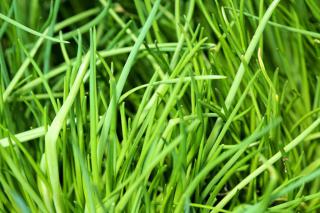

Chives are aromatic herbs that are easy to grow. You’ll get an abundance of spicy leaves!
Key chives facts:
Name – Allium schoenoprasum
Family – Alliaceae
Type – Herbs and spices, perennial
Height – 8 to 16 inches (20 to 40 cm)
Exposure – full sun
Soil: ordinary – Flowering: summer – Harvest: May to October
<!–silent
–>
Caring for this plant from planting to harvest will ensure as years go by that you’ll have nice growth. In the ground or in a pot on the balcony or windowsill, here are all the tips on how to grow them.

If sowing chives from seed is what you want, best sow directly in the plot anytime from April to May.
You can plant young sprouts purchased in pots from stores all spring and summer long.
If a neighbor grows chives, just split the bunch in half with a spade or sharp knife, and plant each half: one back in place, the other in your own garden!
 Chives, excellent for growing in pots
Chives, excellent for growing in potsFor growing in pots, on a balcony or a terrace, keep them potted and water regularly, every time the soil is dry.
 Once settled in, chives don’t require any care, they grow on their own and multiply quickly.
Once settled in, chives don’t require any care, they grow on their own and multiply quickly.
Before winter, protect chives from the cold and you’ll be able to harvest all winter long.
 Fragrant and spicy, chives are excellent plants to pair with mixed salads, sauces, fresh cheese and omelet during the whole summer and until the beginning of fall.
Fragrant and spicy, chives are excellent plants to pair with mixed salads, sauces, fresh cheese and omelet during the whole summer and until the beginning of fall.
These easy-growing plants only ask that you be a bit careful not to overwater, or you might make the bulbs rot.
This plant is also quite ornamental thanks to its summer blooming, and it can spread along edges, pathways and flower beds.
The cute flowers form pom-poms about an inch across that are almost always pastel purple. They’re edible, too! Simply chop them up as you would the spice itself. Used in dips, they’ll give a rare, attention-seeking purple touch!
Chives feel comfortable both inside and outside the house.
You can grow them all winter long in the garden or on a windowsill indoors.
The only concern is to provide as much light as you can, and protect them from freezing.